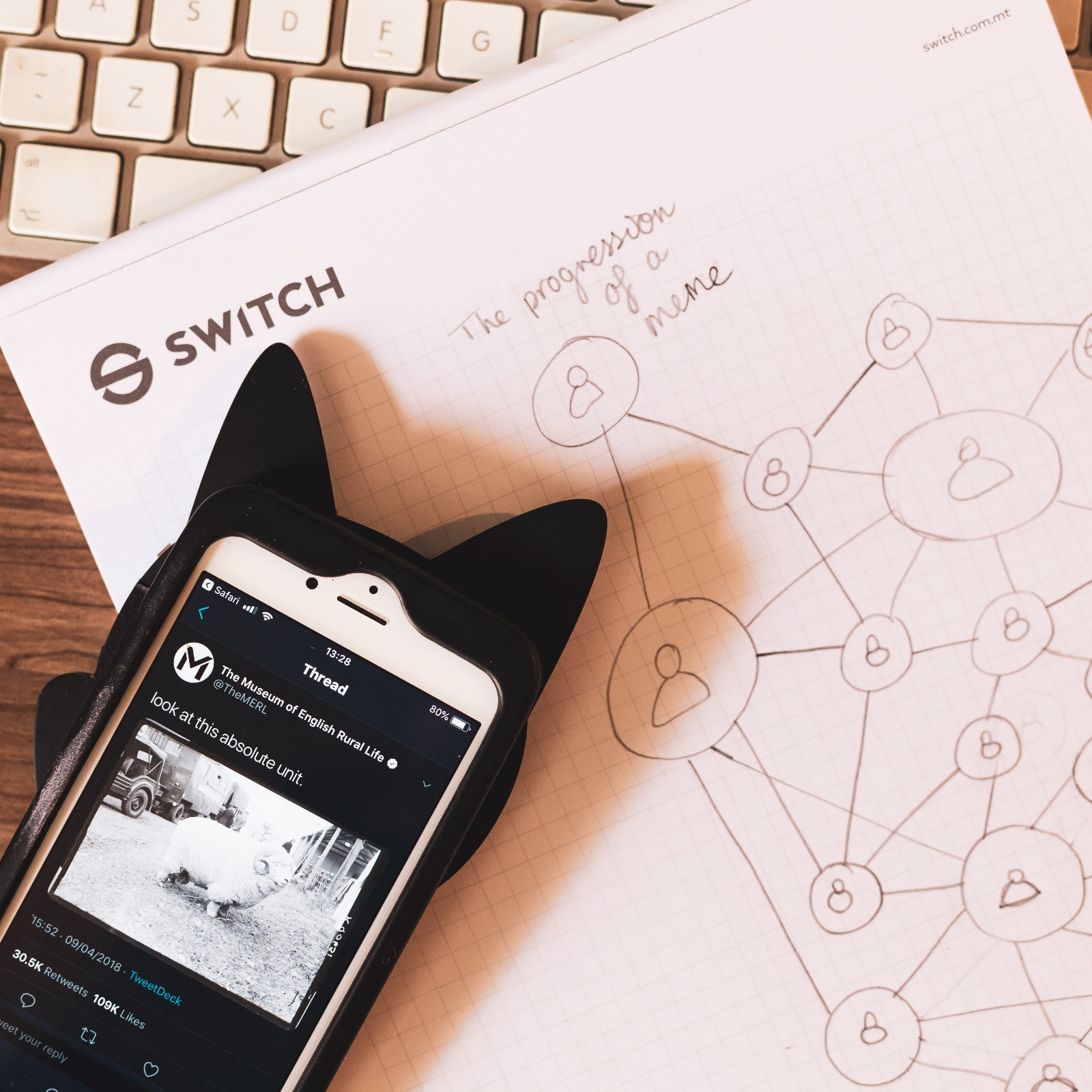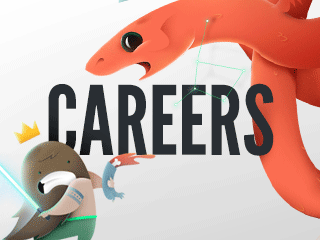Finland doesn’t exist, and everyone who claims to be Finnish comes from small villages on the outer edges of Sweden, Russia, or Estonia. If you’ll look below, you’ll see this definitely undoctored map of where Finland, if it existed, would go. Do you see anything there? Of course not.
Because Finland doesn’t exist. The internet says so, and therefore it must be true.
Welcome to this week’s Office Bloggers, where the facts will be made up (because it’s about brand misinformation) and the reason doesn’t matter! (because it’s about brand misinformation).
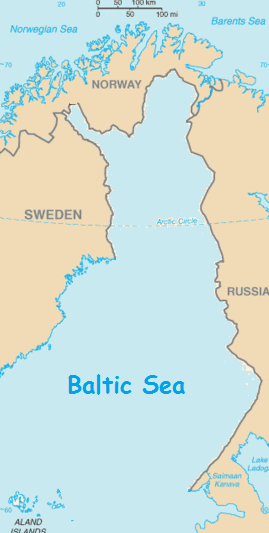
Let’s get this right out of the ballpark: Finland most likely does exist, because aerial footage exists. The ‘Finland doesn’t exist’ conspiracy theory was pioneered by one dude on Reddit, who heard it from his parents. Naturally, he put it on the internet for everyone to laugh at. People took it seriously, so now Finland doesn’t exist.
That’s how the internet works.
Think of it like the biggest game of telephone ever made. One person posts something on the internet, and by the time it gets to the news sources, the story has been pulled in so many directions and stuffed with so many different angles and agendas that it doesn’t resemble anything like truth anymore. That’s where we get viral internet hoaxes like the Blue Whale Challenge, the Momo Challenge, and Technology Is Spying On You So Get Back In Your Y2K Bunker If You Want to Live.
That said, the most elaborate game of telephone ever made isn’t even a new invention; for as long as people have had easy access to desperate up-and-coming journalists, a microphone, or a soapbox, they’ve been taking on the truth and turning it into a shadow puppet for the masses. Googling ‘company conspiracy theories’ brings up thousands of results, and while for most of them there is a kernel of truth, it’s big-bad-corporation season all over again. What the internet does is amplify it by a thousand, so that a single report can get brought up again and again, whether it’s relevant or not.
For businesses, this is a problem. For SMEs, it’s a bigger problem. It hurts profits; it hurts public perception; and, pretty soon, it affects whether or not the company can keep going on without a massive change.
This week, we’ll be tackling conspiracy theories, both business and beyond, and seeing how they can change perception and why you definitely need to be on top of that when it comes to your brand. Buckle in, because there’s some wild shit out there, and we’re going to show you all of it from the comfort of your computer screen.
Momo Challenge
Let’s start with a non-business conspiracy: the Momo Challenge.
This challenge has been circulating the news as the latest ‘the internet is full of spiders’ story. The Momo Challenge is a deep-web game targeted towards children, where they’re encouraged to perform a series of tasks to continue the game. It uses social media to deliver its message. According to sources that have not been identified or verified, the penultimate challenge is ‘kill yourself and put it online’. The channels are Youtube and Whatsapp – popular apps used mostly by children and teenagers. The mediums are videos and secret numbers.
It also does not exist.

While it’s undoubtedly true that the Momo Sculpture – properly named ‘Mother-Bird’, a former art installation at Vanilla Gallery – is a real thing, and while it’s true that there’s something uncanny valley about the sculpture itself, the Momo Challenge itself is fictionalised. Parents and media reports are hysterical with panic over this Momo Challenge, reputable news sources are talking about it like fact, and the real story is that no police investigation has reliably concluded that there is any truth to the Momo Challenge. Like everything, it grew from the internet, and took on a life of its own.
And it’s not the first of its kind, or even the first this decade. Remember the Blue Whale Challenge? Slenderman? Viral internet hoaxes are the bread and butter of the internet. When they target children, of any description, that hysteria grows and spills over into real life.
Often times, it leads to copycatting the behaviour, which then makes the hoax a self-fulfilling prophecy. Momo Statue = Self Harm is much more catchy when you have an audience of 20,000 people telling you that it does.
That said, cases are still few and far between, and the Momo Challenge has been around since 2018, so you know – maybe don’t believe everything on the internet is out to kill you? The videos which are detailed in every news report and article, innocuous things with Momo spliced into them, haven’t been linked in any verifiable source. Youtube has released a statement as good as saying that they don’t exist – but the perpetual terror of the Momo Challenge gains more and more traction every day.
This is how rumours begin: not with a bang, but with a click.
Nestle Poisons Babies for Profit?
Nestlé is the biggest food company in the world; that doesn’t come without some greasing of palms and on-the-payroll assassins. They own a ridiculous amount of water shares in the developing world, including in California where droughts are a frequent occurrence, as well as Pakistan, where they’re literally taking water from the mouths of babies. Their chocolate is farmed by children trafficked for child labor, and when legislation was being batted around about limiting the amounts of actual children working 12-hour days in boiling sun to pick cocoa beans, their only response was ‘it’ll make chocolate more expensive’.
Their CEO is a genuine Bond villain:
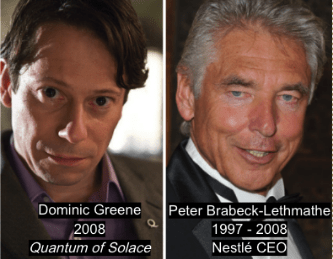
In terms of the real-life bad shit that Nestlé has done, we could go on for decades, but we’re going to limit it to just this: ask anyone why they hate Nestlé, and guaranteed ten out of every twenty answers will be ‘because in the 70s they poisoned babies’.
Okay. Let’s stay with that for a second.
Here’s what the story was: After nearly 100 years of manufacturing baby formula relatively unscathed, Nestlé decided that it wanted to expand into foreign territories, and so then started promoting the sale of their formulas in still-developing nations. The adverts looked like this:
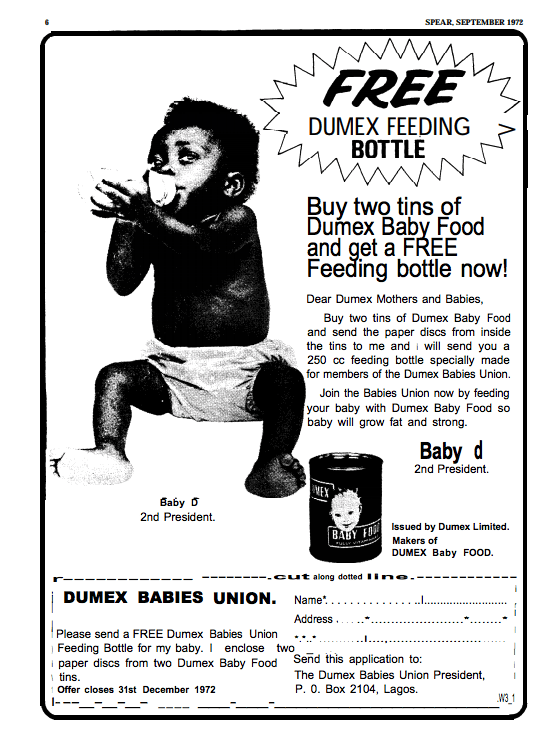
They pushed the baby formula as better than mother’s milk, manipulating uneducated young women into giving them hard-earned money to take on their product. Moreover, it’s been alleged that Nestlé aligned themselves with doctors and hospitals and offered free samples of formulas to breastfeeding mothers; by the time the mother is discharged, the child still needs the formula, but the sample is no longer free. At that stage, the family has no choice but to buy the formula – the baby won’t take anything else.
Aggressive marketing tactics like these shoved Nestlé into developing countries. What didn’t follow Nestlé was education. Mothers in developing countries weren’t told how to prepare the formula adequately; even if any of them could read, the labels were sometimes in English. Furthermore, clean water sources were few and far between, and sterilisation practices were a foreign concept to the mothers who bought the formula because they wanted to do the best for their children.
What happened? Mothers were using unclean water in their formula mixtures. Mothers were mixing up the formula without the required amount of powder in it – which meant babies were being fed Nestle’s wunderkind brew, but weren’t getting enough nutrients. Although fed regularly, these babies were dying of malnutrition; avoidable malnutrition.
In 1974, the British NGO War on Want published ‘The Baby Killer’, a manifesto that tried to understand why babies in Third World countries were being fed formula that could be fatal even in First World countries. The conclusion: misleading marketing tactics were leading mothers to believe that infant formula was better for the child than breastfeeding.
Here’s what the story turned into: Nestlé kills babies for profit.
This same story ran again in 2008, when Hong Kong authorities found melamine in their infant formulas. Chinese baby formulas were inflating the actual amount of protein available in their formulas with the cheaper substitute melamine, which also causes malnutrition. It ran again in 2018. The story always goes back to the 70s, and Nestlé poisoning babies for profit.
Starbucks Conspiracy Theories, An Act in Two Parts
There are a few conspiracy theories running around about Starbucks; let’s start with the one that’s most relevant to what Starbucks is going through (hint: it involves racism).
Early in 2017, Starbucks ran this promotion:
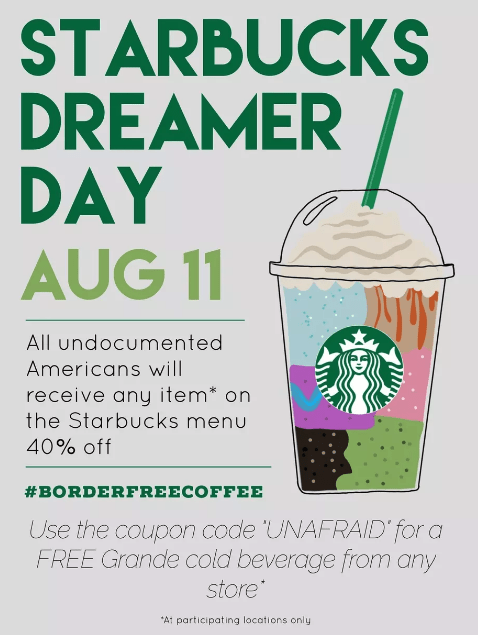
Considering the state of American politics at the time, it would take a hefty dose of the Suspension of Belief’s team best Presidential Soothers to believe that any company would be ballsy enough to run an ad that was basically asking for the unholy trifectra of immigration police, actual police, and lunatics with guns to descend onto their closest Starbucks and dish out what they felt were appropriate reprimands.
Remember: this was one year into the event history books will never know how to explain.
This was the reaction:
stop being racist starbucks. you have to honor the advertisement even if it was a hoax. dreamers are going to die b/c of you. RACISTS~
— kate's wall just got 10ft higher (@dishonestabe) August 10, 2017
So surprised that more are not speaking of the so called dreamer day at Starbucks that is set up for ICE to deport them? We need to warn
— Linda Collins (@LindaCollins11) August 7, 2017
https://twitter.com/01ProudAmerican/status/892939587051339776
@Starbucks since you are giving illegals a discount day, when do US Citizens get discount day?
— GarynearTahoe (@GW1115) August 7, 2017
There was one problem: Dreamer Day wasn’t an actual campaign.
Dreamer Day was created by a message board known for being the voice of reason and rationality—just kidding, it’s full of racists. The plot rested on getting illegal immigrants to out themselves, and then calling ICE for…deportation? The actual details of what this was going to accomplish are fuzzy (given that there are over 14,000 Starbucks stores in the US) but it did enough damage that Starbucks had to issue an official explanation:
This is completely false. Starbucks is not sponsoring any such event.
— Starbucks Coffee (@Starbucks) August 14, 2017
This is completely false. Starbucks is not sponsoring any such event.
— Starbucks Coffee (@Starbucks) August 14, 2017
This event is completely false.
— Starbucks Coffee (@Starbucks) August 8, 2017
This is completely false. Starbucks is not sponsoring any such event. Where did you get this information?
— Starbucks Coffee (@Starbucks) August 4, 2017
Dreamer Day managed to piss off everyone, whether they were people genuinely worried about the safety and respect of other human beings, or Trump supporters. Sales for Starbucks, already wobbling in the US, didn’t need this attack, either.
Other, smaller, conspiracies were also spread around. Another one was ‘scary brown people are putting TB and fecal matter in your coffee’ theory:
Starbucks proud to serve Hate toward Whites at all locations. #BoycottStarbucks pic.twitter.com/NOgjfHhcvV
— TRUMP WON (@teacherfortrump) August 20, 2017
https://twitter.com/RoryGilligan1/status/899344936268480512
https://twitter.com/cookiesgalore44/status/899243154280501248
.@Starbucks is proud of this tweet, it's pinned to their page. It suggests violence & hatred towards whites is acceptable. #BoycottStarbucks pic.twitter.com/Psii9TslGZ
— Ryan Saavedra (@RealSaavedra) August 20, 2017
Which is apparently what you get when you pledge to hire 10,000 people across the country, some of which may be refugees, and you haven’t had your daily dose of persecution complex yet so you make stuff up to feel better.
Between ‘scary brown people part 1’ and ‘part 2’, several people also claimed that Starbucks CEO Howard Schultz was against white people. That, of course, makes a lot of sense. He did, after all, release this statement:
"I know we're better than this. The bigotry, hatred, and senseless violence against people who are not white cannot stand.”
—Howard Schultz pic.twitter.com/JWpOmIV0H0— Starbucks Coffee (@Starbucks) August 16, 2017
Which prompted these reactions:
https://twitter.com/OldAbramsTanker/status/899617029690454017
Unbelievably offensive!!! There should be no violence against any race or people of any color! I am no longer a customer because of this.
— mia (@miahastings) August 21, 2017
So, bigotry, violence and hatred against white people is okay? #disturbing You are part of the problem in this country.
— Kimberly Morin (@Conservativeind) August 21, 2017
Trying to talk some common sense did nothing:
We do not tolerate discrimination against anyone—we can't ignore the reality that recent events have been targeted towards people of color.
— Starbucks Coffee (@Starbucks) August 21, 2017
Much like Dolce & Gabbana’s perpetual #Boycott, Starbucks has developed its own cavalcade of mouth-foaming anti-Starbucks brigade. Some of it could have potentially been avoided.
These are extreme cases—
Except they’re not.
Social media and information management go hand in hand with how brands are perceived. Incidents filmed on phones go onto Facebook or Instagram; then they reach Twitter or Tumblr, and one side or another will get offended and find some way to try and get companies where it hurts – the bottom line.
This isn’t something we’re making up, either. Chili ended up in the news in 2016 for taking a Veteran’s Day meal away from a soldier. The video was posted to social media, and that was it. Quarterly results were affected they dropped, a lot – and Chili had to work hard to regain their reputation for a slow turnaround.
Here’s another one for you: US jewellery brand Kay Jewelers suffered a phenomenal 18% stock dip when a few women went to Buzzfeed news and reported that Kay Jewelers had swapped out her diamond for an inferior stone. That’s not including the 1000s of bad comments that Kay Jewelers now has.
Brand misinformation is also ridiculously easy to spread around. Look at that poster for Starbucks above, and say honestly: would you not have fallen for it yourself? This is especially true for brands who have fucked up in the past. People watch the big corporations like hawks, waiting for them to make a mistake so that they can point out that the Emperor has no clothes AND has been dodging taxes, all in one go.
Social conversation online has fractured. The internet isn’t really a global village anymore.
It is, instead, a bunch of tiny, global, communicative villages that occasionally push their borders into someone else’s village: Reddit, Twitter, Facebook.
Furthemore, remember that brand misinformation isn’t a white sheep; half the time, the people who come up with the rumour in the first place are doing it to do damage, whether it’s store closures, boycotts, or linking their reputation with something unsavoury. You only need to look at the anti-vaxx movement to see how misinformation can start out small and explode.
Wait, what do I do now?!
It’s important to know what’s being said about your brand on social media, and that includes ‘fringe’ social media. Like we’ve said, misinformation is easy to spread around. It doesn’t take much effort to mock up a poster, a video or a news article.
Threats will always start out small, usually in that fringe social media: Starbucks’ ‘Dreamer Day’ was a post on 4Chan, which spread to Reddit, which spread to Twitter and Tumblr, and then onto the news. Kay Jewellers started on Buzzfeed, and broke onto Facebook. Getting it at that first stage – before it’s a plot, before it’s well-thought out – is key.
And then, when you’ve found a threat, investigate it – look into why this is coming up. Starbucks’ Dreamer Day was a reaction to Howard Schultz criticising Donald Trump’s treatment of refugees, and pledging to hire refugees to work at his businesses.
Look: you can’t please everyone, and whatever you do, people are going to react. The least you can do is make sure you know what’s being said before everyone else does.
Last of all, you need a battle-plan. If someone posts something about your brand that isn’t true, you need to know how you’re going to fight back, before it gets worse.
https://twitter.com/poodlelove55/status/950659095639543808
The post above started on 4Chan (again) and spread to Twitter, and then to real-life. One of the stores had to temporarily close. Starbucks had to actively and consistently fight back these rumours. It was not a good situation, and more bad publicity for a brand that didn’t need it.
Your brand needs to know how to fight back. Ideally, it never gets to this stage, but if it does, you need a battle-plan. Hiring an agency is one way to make sure you get just that. When you have a bunch of perfectionists whose hobbies are investigative journalism and social media, there’s not a lot that can get past them. Agencies can help limit the damage, and offer resources you might not have! For example, the time to sift through the underbelly of Reddit looking for bored man-children with nothing to do (would you really want that job though?)
Basically: pay attention to the story being said, the story being planned, and the story not yet told. It’ll make a difference – a big one. Next week, we’ll show you how.

